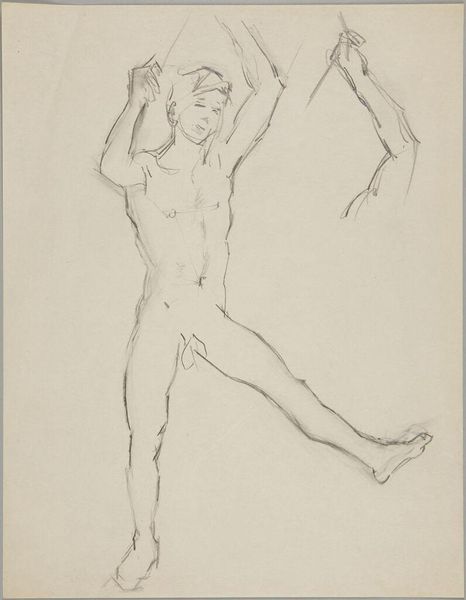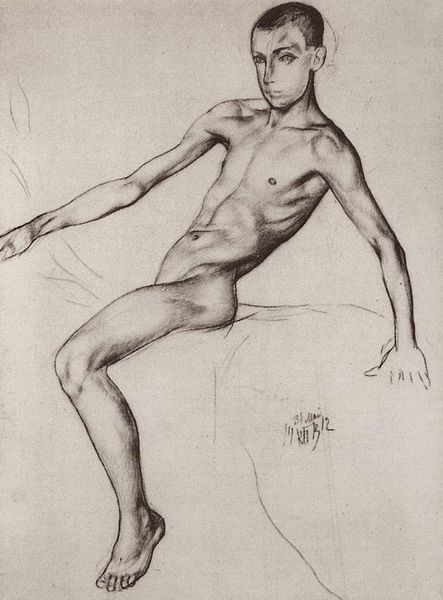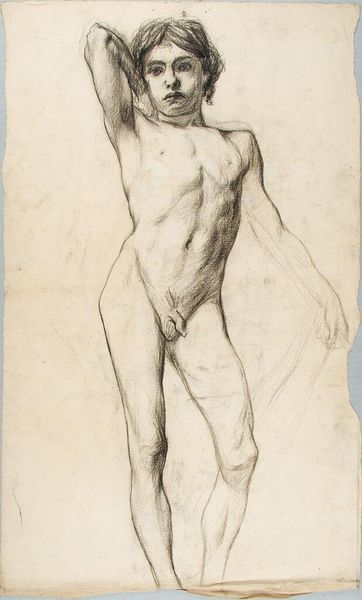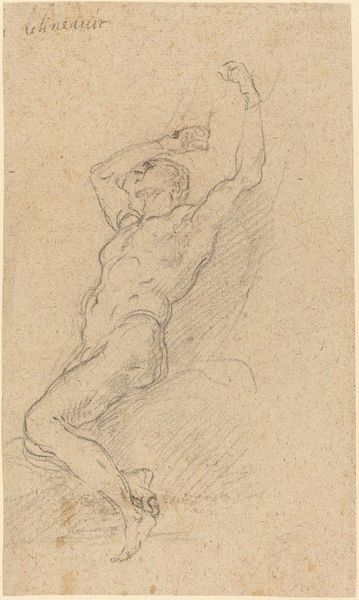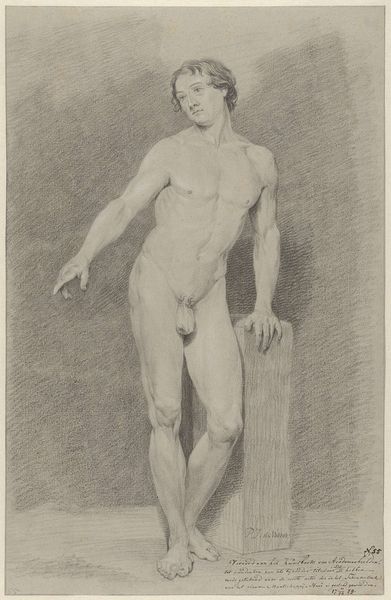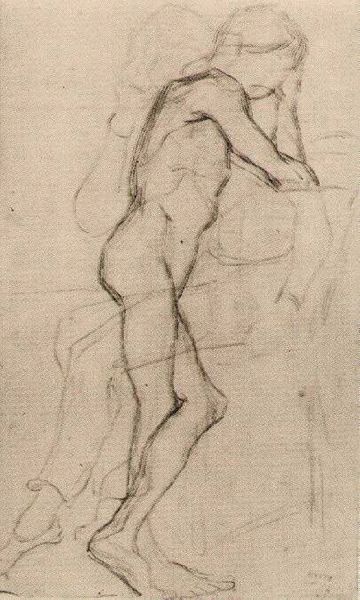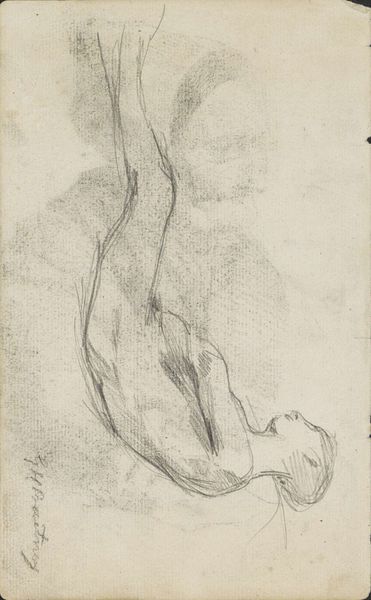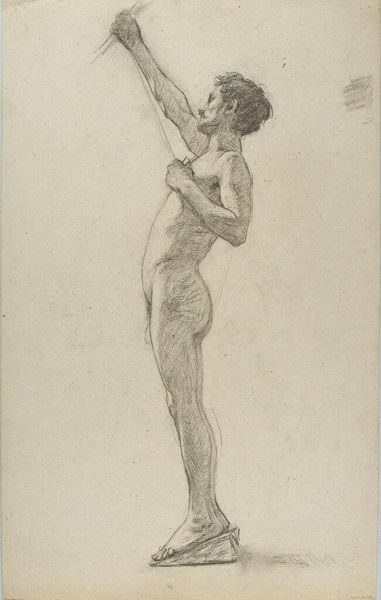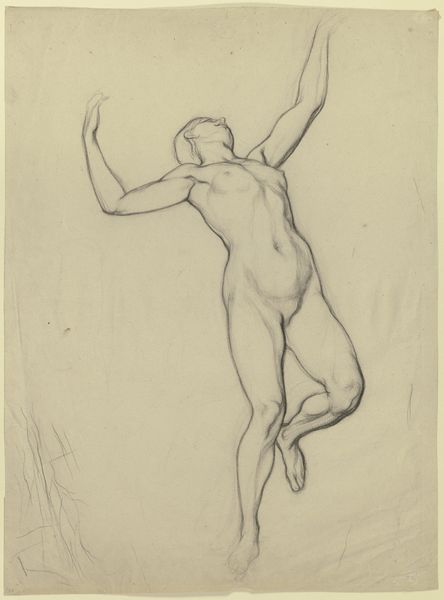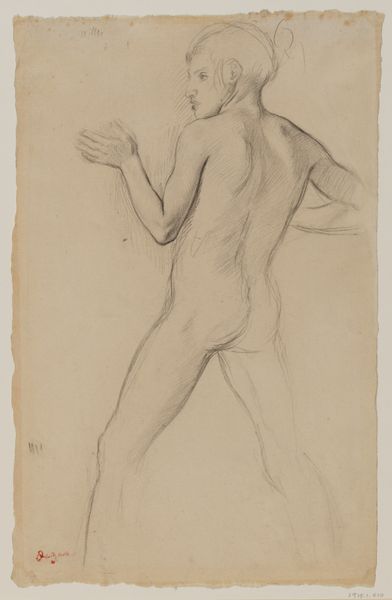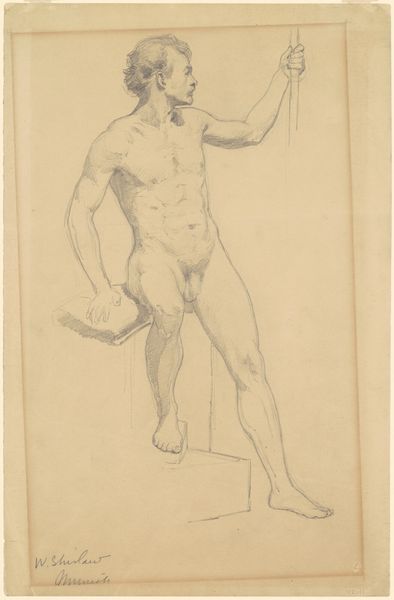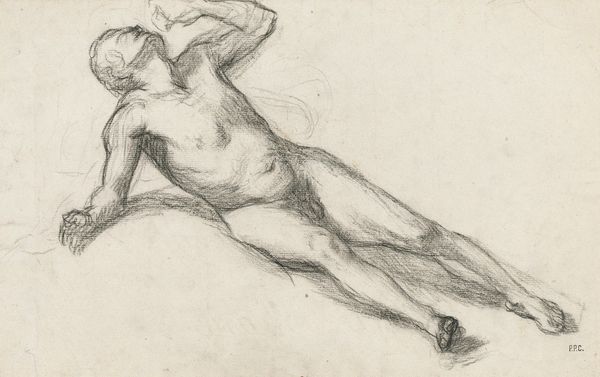
drawing, pencil
#
drawing
#
pencil sketch
#
figuration
#
sketch
#
pencil
#
expressionism
#
portrait drawing
#
nude
#
modernism
#
arm
Copyright: Public domain
Editor: We are looking at "Picture to picture game boy," a pencil drawing by Kuzma Petrov-Vodkin from 1911. It's a nude figure, quickly sketched. What really strikes me is how the line work, though unfinished in places, still manages to convey a sense of dynamic movement and balance. What stands out to you in this piece? Curator: The dynamism you observe arises from the strategic deployment of line weight and directional force. Note how the heavier, more deliberate lines articulate the figure's torso and right leg, grounding him, while the lighter, sketchier lines around the outstretched limbs suggest potential energy, a body poised in transition. Observe also the use of hatching to create volume and shadow. How would you describe the spatial relationships created solely through the varying densities of line? Editor: I see what you mean! The darker lines definitely push the figure forward, making him feel more present, while the lighter lines almost fade into the background, suggesting the space around him. So the shading doesn’t just describe the form, it helps create depth too? Curator: Precisely. The artist is not merely representing a body; he is constructing a pictorial space using the inherent qualities of line. Notice also how the abstract lines in the background interact with the figure. Do they provide context, or do they serve primarily as compositional elements that draw our eyes to certain directions of the overall line composition and rhythm in the work? Editor: I'd say more the latter, because the background is so undefined; it almost feels like he wanted to emphasize the shape and form of the figure itself without distractions. I guess that helps focus our attention on the figure's movement. Curator: A crucial insight. The formal elements, line, tone, and composition are of central importance here. By focusing on the artist's control over these elements, we understand how Petrov-Vodkin translated a subject into a self-contained aesthetic experience. Editor: This has been really helpful to think about how something as simple as line and shading can completely transform the feeling of an image. Curator: Indeed, attending to the artist's material and technical choices, can illuminate aspects of the composition that would not otherwise be noticeable.
Comments
No comments
Be the first to comment and join the conversation on the ultimate creative platform.
